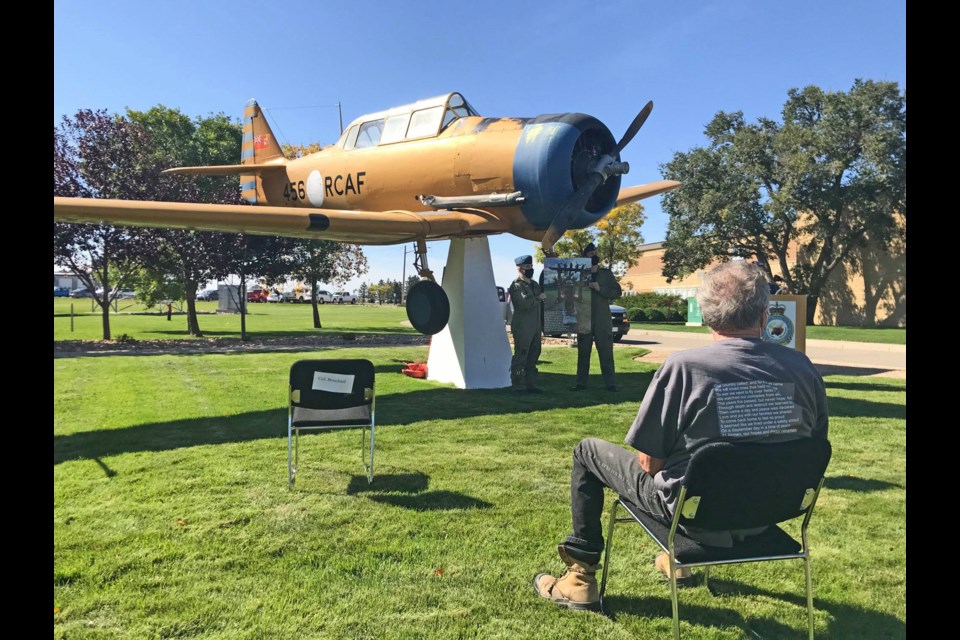15 Wing Air Base has honoured the memory of 21 airmen from the Royal Canadian Air Force (RCAF) who died in a crash in 1946 while flying from Minot, N.D. to Estevan.
A small group gathered on Sept. 15 to commemorate the 75th anniversary of the incident, which killed 20 RCAF pilots and one ground crewman after their Dakota transport plane crashed at the site of the former 38 Service Flying Training School just outside Estevan.
It was the second-worst accident in RCAF history, the loss of life exceeded only by the crash of a Liberator bomber on Oct. 19, 1943, into a mountain north of Montreal, which killed 24 airmen.
Investigators later determined that the cause of the 1946 crash was because groundcrew likely failed to remove elevator locks from the Dakota before it left the airport in Minot.
An article in the Regina Leader-Post on Sept. 17, 1946, quoted Estevan-area farmer Jake Flower, who saw the crash, confirming that the Dakota came in low “and suddenly it shot almost straight up, stalled, spun around once and crashed to the ground … it exploded with a loud roar.”
Meanwhile, former air force historian Hugh Halliday found microfilm at Library and Archives Canada that included the accident investigation report, which confirmed what Flower saw.
The report noted that the airplane attempted a landing at the Estevan airport at 10:15 a.m. but levelled out and commenced a climb. After climbing roughly 100 feet, the aircraft levelled out again momentarily and then climbed again with the wheels retracting.
“The second climb was very steep and was maintained until the aircraft stalled, dropped the port wing, and dove vertically into the ground and exploded on impact … ,” the report added. “It was speculated that the pilot knew the condition of his elevator almost immediately after takeoff but maintained control through the use of trim tabs and elected to continue to Estevan, to effect a landing with a slightly reduced fuel load.”
The Sept. 15 ceremony was entitled “Together Forever In the Clouds,” named after the non-fiction book that Saskatchewan author Marie Donais Calder wrote about the crash and that she released this July. Calder is known for penning a 25-book series called “Other Side Series,” which chronicles her father’s time with the Canadian Army in Germany after the Second World War.
The event also recognized a sculpture entitled “Forever in the Clouds” that Estevan chainsaw artist Darren Jones created out of a 500-year-old Douglas fir tree. The sculpture features the faces of all 21 airmen, a Lancaster bomber and a plaque with the men’s names.
The book has information about the group's squadron, along with details of the accident. It contains military documents, pictures, as well as letters written by the pilots. Some information was provided by family members of the victims.
“It took years to find … members of all of the families, but we did accomplish that,” Calder told The Estevan Mercury. “Because of that, I was able to really tap into their memories, and this is what I was hoping for, I was hoping to write about … but I wanted to present them as the people they were, and not just a rank and a number.”
With files from The Estevan Mercury and the Regina Canadian Aviation Historical Society.




